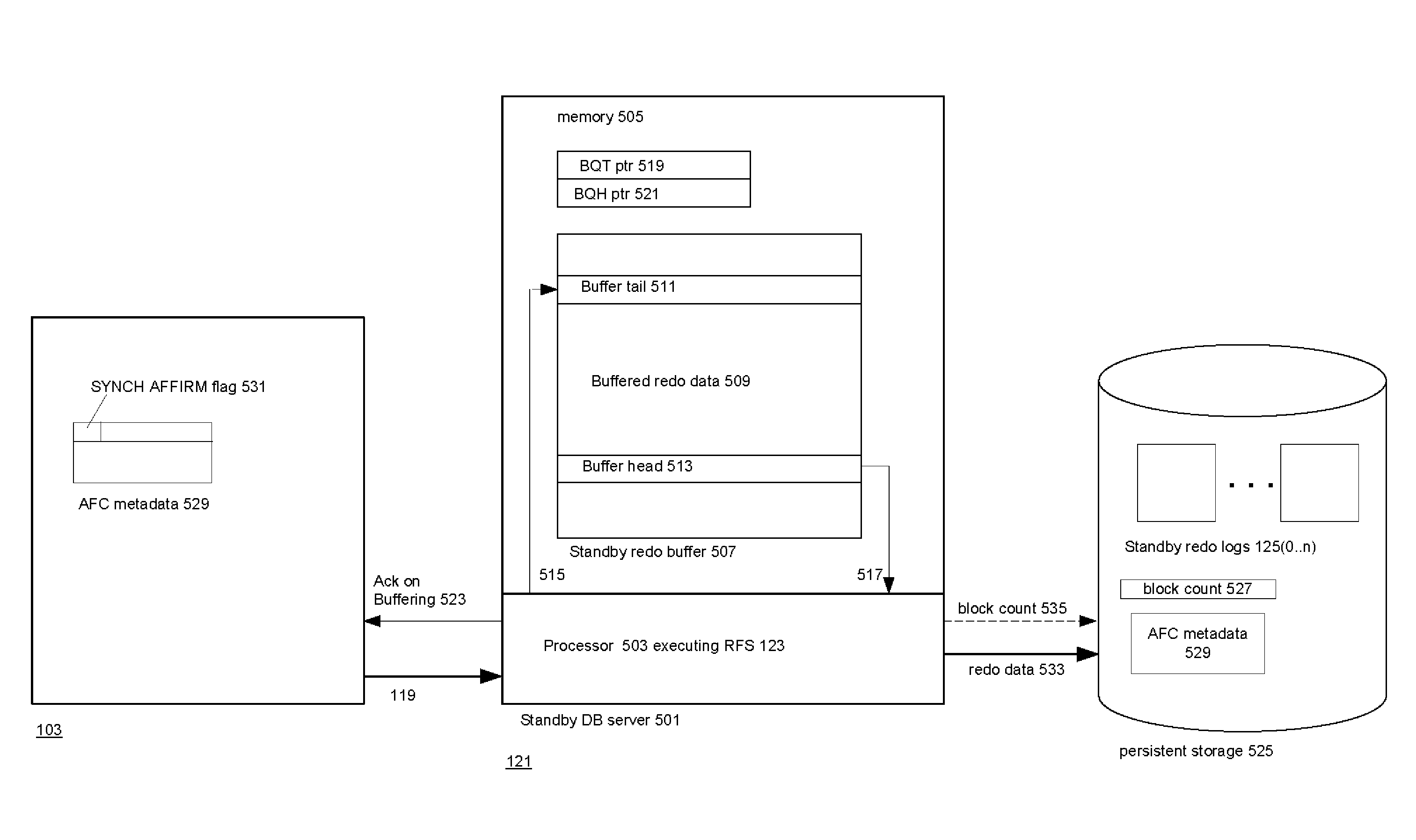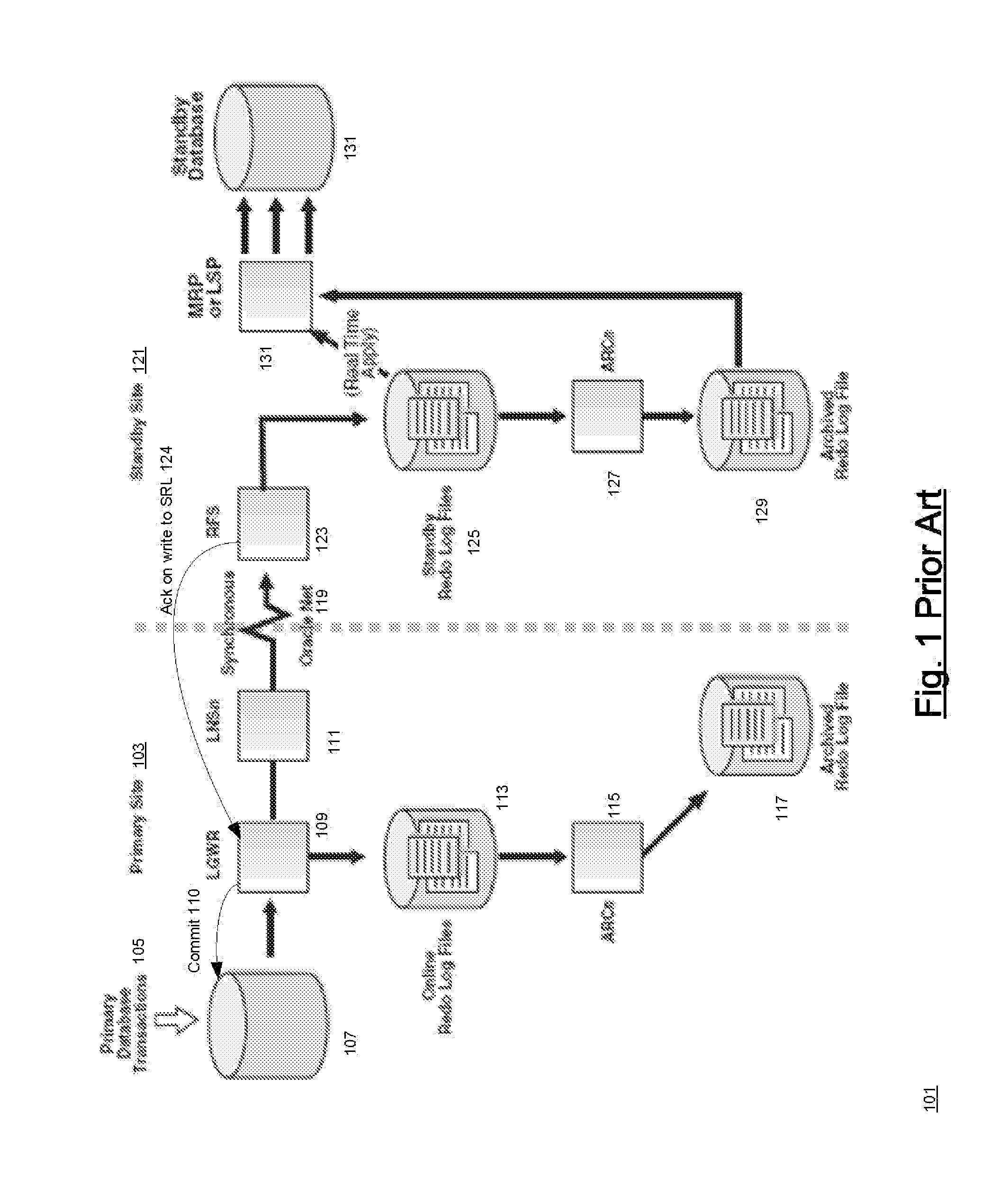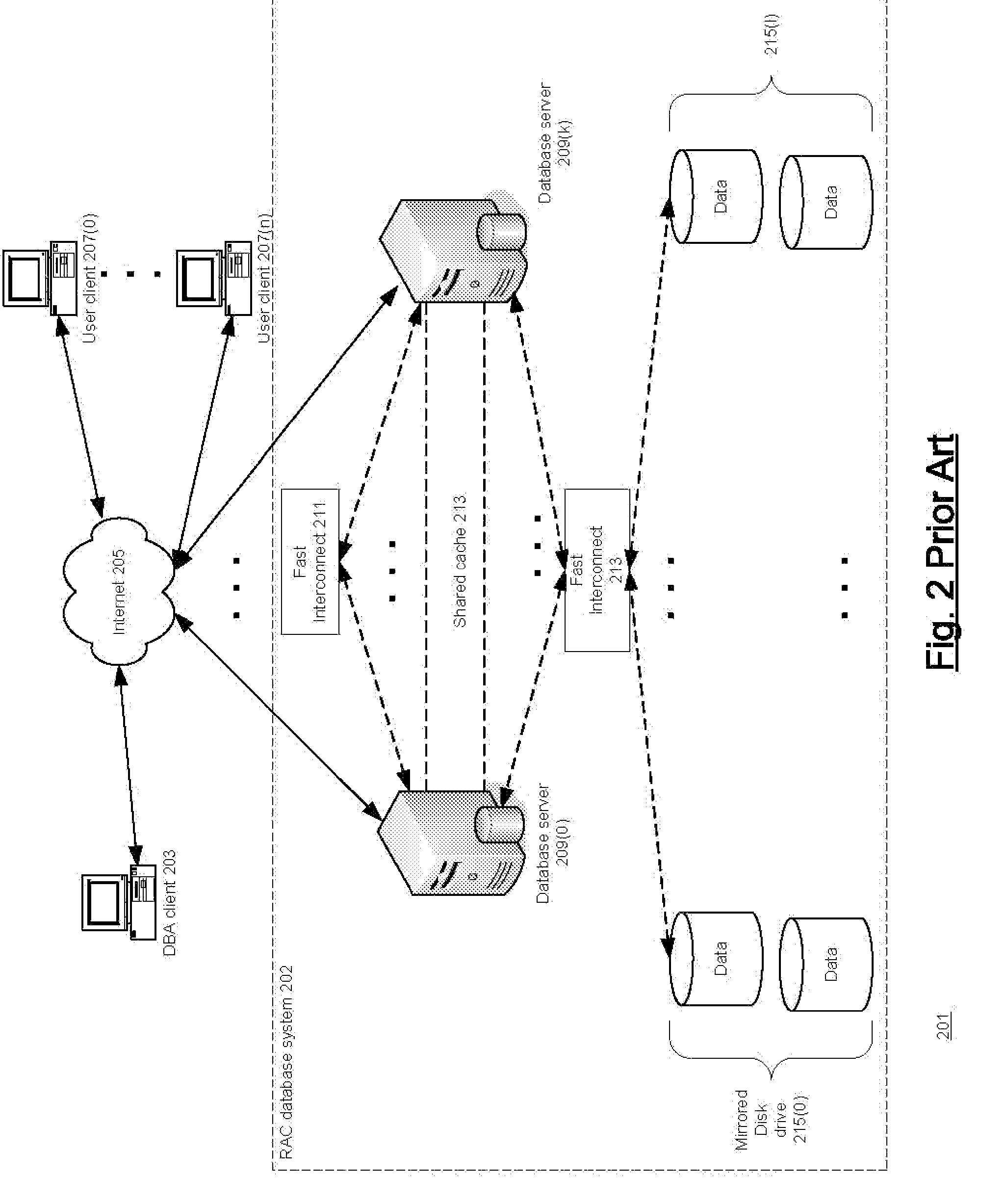No data loss system with reduced commit latency
a data loss and commit latency technology, applied in the field of data loss systems, can solve the problems of data loss, prior art's tradeoff between data protection and commit latency is not optimal, etc., and achieve the effect of reducing the time required
- Summary
- Abstract
- Description
- Claims
- Application Information
AI Technical Summary
Benefits of technology
Problems solved by technology
Method used
Image
Examples
Embodiment Construction
Overview of the Invention: FIG. 5
[0061]The invention reduces commit latencies at the primary database while maintaining the data loss guarantees of Maximum Availability as long as the primary and the standby do not become unavailable simultaneously. The invention thus takes advantage of the fact that simultaneous failures of the primary and the standby are extremely rare.
[0062]Since that is the case, double failures will generally be sequential: either the primary will fail before the standby or vice-versa. In the first case, the standby will be able to continue processing the redo data that it received from the primary prior to the primary's failure but has not yet written to SRL 125; in the second case, when the standby fails, the primary has its copy of the data up to the point where the standby failed.
[0063]Because simultaneous failure is the only situation where the primary fails and the standby will not be able to store all of the redo data it has received thus far from the pr...
PUM
 Login to View More
Login to View More Abstract
Description
Claims
Application Information
 Login to View More
Login to View More - R&D
- Intellectual Property
- Life Sciences
- Materials
- Tech Scout
- Unparalleled Data Quality
- Higher Quality Content
- 60% Fewer Hallucinations
Browse by: Latest US Patents, China's latest patents, Technical Efficacy Thesaurus, Application Domain, Technology Topic, Popular Technical Reports.
© 2025 PatSnap. All rights reserved.Legal|Privacy policy|Modern Slavery Act Transparency Statement|Sitemap|About US| Contact US: help@patsnap.com



